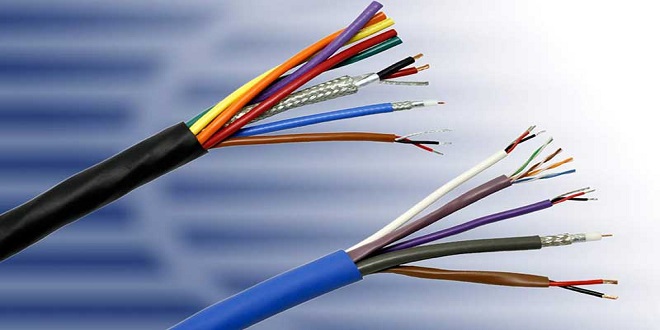10 Gigabit Copper UTP vs STP: Cabling System Construction
The 6A unshielded on the market shows that in order to attain the ANEXT Index, wiring manufacturers increase the separation distance between cables by increasing their outer diameter. However, 6A unshielded is more difficult to work with because it requires more pipe grooves and a greater bending radius. There are also limits to the density of cables ties. Mixing Category 5e and Category 6 in a wire slot/bridge will not affect the ANEXT Index due to different signal transmission rates.
TIA/EIA568B.2-11 states that 6A cables should not exceed 8.99mm in diameter. The 6A unshielded, twisted pair on the market today is at least 30% larger that that of Category 6, unshielded twist pair and at least 10% smaller than that 6A shielded pair. Due to the increase in cable diameter, the cost of trunking/conduit is going up. The number of 6A shielded twisted pairs currently on the market will be at least 30% larger than that of Category 6 unshielded twisted pair and at least 10% higher than 6A unshielded twisted pairs using the same trunking with the same filling ratio.
The 6A unshielded cables increase the wire diameter. This must be taken into consideration when comparing the 6A and 5e categories. It is actually very little on the market. There is no difference in the wire diameter between 6A shielded or 6A unshielded. However, it is important to consider that the wire diameters of 6A shielded and 6A unshielded are not the same. The bending radius for the shielded system is also larger than the unshielded system. For example, the bending radius for the unshielded 4-pair twisted couple cable should be at most 4 times its outer diameter. The bending radius for the twisted pair cables should be between 6 and 10 times its outer diameter.
Although there are many opinions on the construction issues caused by the 6A diameter wire, it is clear that the 6A system construction must be more precise and exact to ensure transmission performance of the 10 Gigabit copper cables.
10 Gigabit Copper UTP vs STP: Project Cost
Prior to the introduction of 10 Gigabit Ethernet networks, it was believed that shielded cabling systems were more expensive than unshielded systems. This is no longer true with the advancement of shielding product manufacturing technology, and the emergence 10 Gigabit Ethernet networks. The 6A shielding system is superior to the unshielded 6A system in terms of cost of wiring materials, cost of 10GBASE-T optical modules, cost of testing, comprehensive cost of ownership, return on investment (ROI), and other aspects.
The engineering cost for a wiring system includes the supply price paid by the manufacturer of the product, the cost of construction, testing, and installation of the engineer, as well as the reasonable profit of an engineer and the statutory rate. There are many industry manufacturers that believe category 6A copper shielding system is more cost-effective than non-shielding systems. To eliminate external crosstalk (ANEXT), unshielded products with twisted pair increase physical separation between cables by increasing cable diameter. The Category 6A copper unshielded, twisted pair (UTP), is superior to the Category 6A copper shielded, twisted pair products (STP or FTP). It also uses more raw material and increases testing costs in order to test for external crosstalk (ANEXT).
However, because of the uncertainty surrounding the cost of the project, it is hard to compare the prices of the unshielded 6A copper cable system with the shielded. There is also a lack in comparability between different manufacturers and material grades.
Bottom line
However, 6A systems are often not the deciding factor in a cable’s quality, but construction quality is. 6A has high construction quality requirements, particularly the shielding system. Grounding requirements are also increased by the shielding system. Grounding is expensive. It is hard to gauge the quality of a construction team by its price.
The QSFPTEK technical staff can answer any questions you may have about optical modules 10GBASE-T and copper cabling 10 Gigabit.

